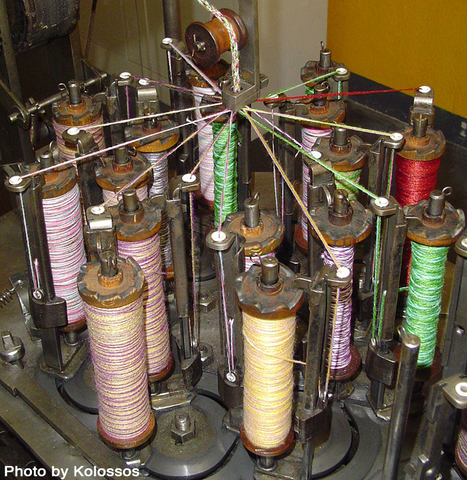Shoelace Manufacturing
Manufacturing
Shoelaces are still manufactured in the United Sates as well as other countries around the world. Traditional shoelaces were made of leather, hemp, cotton, jute and other materials used in rope. Today, shoelaces are made of synthetic fibers, such as nylon, textured polyester, spun polyester and polypropylene as well as traditional natural materials.
The manufacturing process begins with a shoelace braiding machine. This machine looks similar to a flat circle that is equipped with 44 bobbins and a basket is attached to catch the woven shoelace. Once the braiding process begins, the bobbins weave the thin shoelace in a braiding action. The gears on the machine allow the technician to change the speed of the braiding to result in a looser or tighter braid. As the braid reaches the desired length, it falls in the basket to be finished. Some braiding machines can produce as many as 144 shoelaces every 30 minutes.
Once the braid is in the basket, it is moved to the tipping department where the braid is immerses in acetone and inserted into a die that holds acetate tape, which will become the aglet (the plastic tip at the end of your shoelace). The die is then heated and hung on the machine to dry for approximately 20 minutes.
The laces are then cut so that each aglet is now about 0.5 inches long. Once they are cut, they fall into another basket. The laces must be paired. An operator takes a lace into each hand and winds them around a cylinder as a pair and the pair is sent to packaging.

